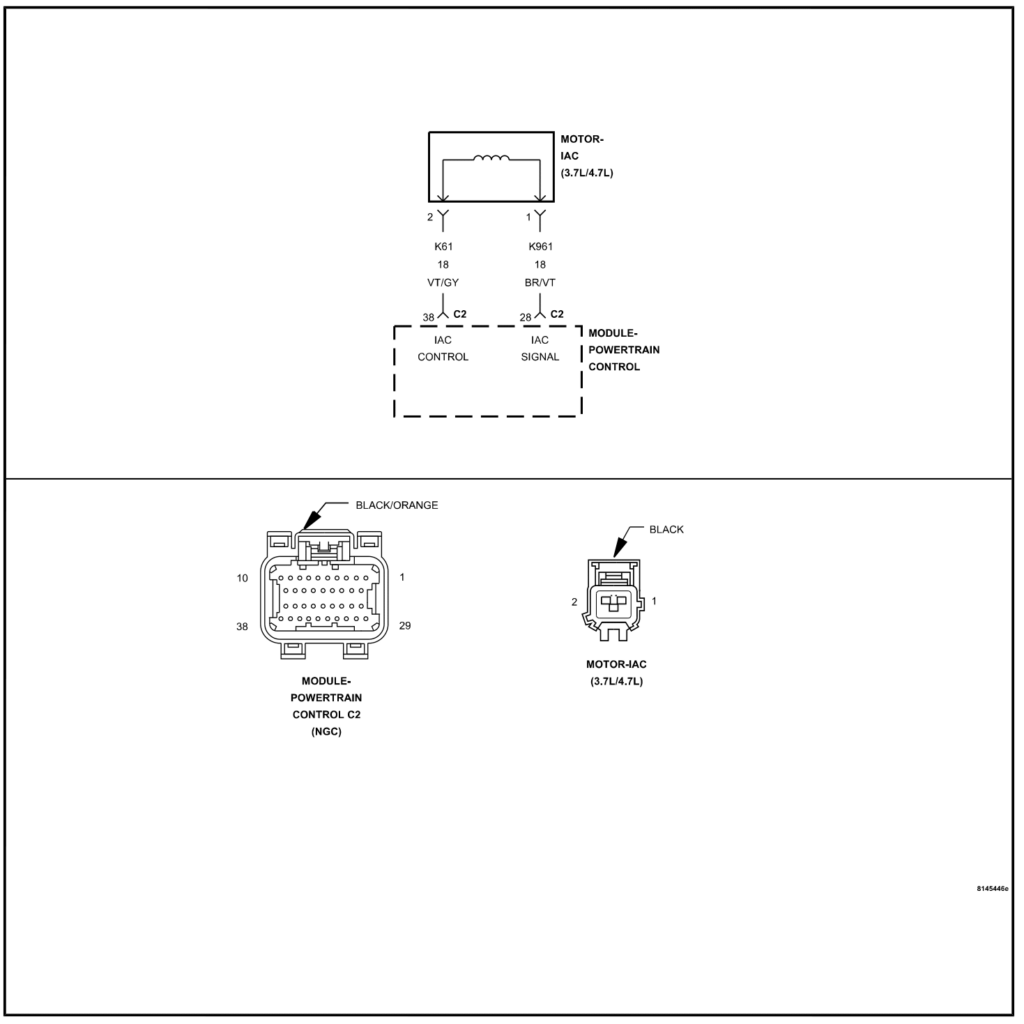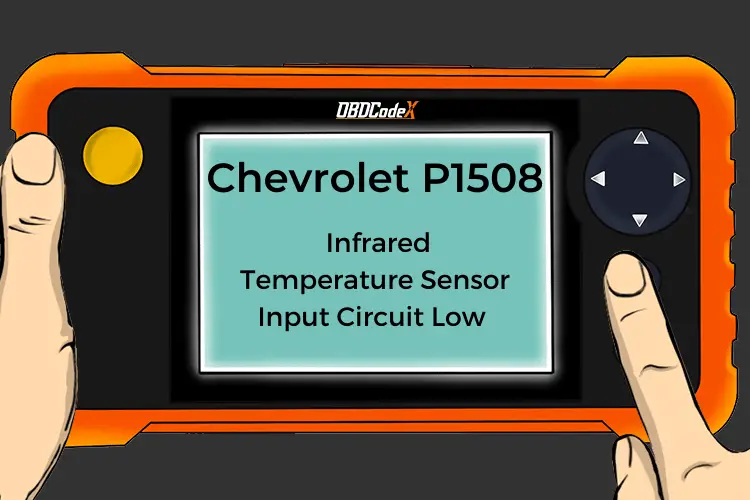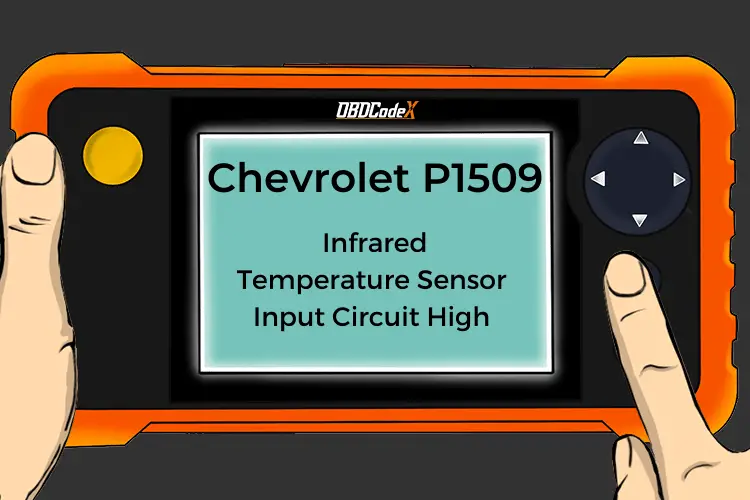P0509: Idle Air Control Circuit High
Is your scanner showing P0509?
No worries. We'll show you what it means and how to deal with it.
P0509: Idle Air Control Circuit High
OVERVIEWWhat Does The P0509 Code Mean?
When your OBD-II equipped vehicle exhibits a malfunction indicator lamp (MIL) and a stored code P0509, it means that the powertrain control module (PCM) has detected a problem with the intake idle air control (IAC) circuit, in this case a value that is higher than expected.
The IAC system revolves around a linear servomotor that controls a plunger which regulates the amount of air allowed to bypass the throttle plate and enter the intake manifold. Controlling the amount of air allowed to bypass the throttle plate is conducive to controlling engine RPM at idle.
When the throttle plate is closed (at idle), very little air is allowed to enter the engine through the throttle body. The engine cannot continue to idle with this small amount of air and would certainly stall. An auxiliary air (vacuum) source must be provided so that the engine can continue to idle with the throttle plate closed.
Of course, the auxiliary vacuum source would be detrimental to engine performance and fuel efficiency when the throttle plate is opened (upon acceleration). Hence the need for a fully adjustable vacuum source that is controlled by the PCM.
The IAC valve plunger housing is manufactured with two separate openings that allow air to pass through them.
The IAC valve is usually bolted to the intake manifold, on or near the throttle body. It is positioned so that, when it is open (the plunger moves out of the opening), ambient air is allowed to flow through it and into the manifold and when it is closed (the plunger fills the opening) ambient air cannot flow through it.
The IAC is seldom completely open or closed but remains constantly in motion; controlled by the PCM. The PCM uses input signals from the oxygen sensors, the throttle position sensor, and various other sensors to determine how much air should be allowed to bypass the throttle plate.
As voltage and ground signals to the IAC valve are adjusted (by the PCM) the valve reacts accordingly. If the engine RPM levels fail to coincide with programmed desired limitations, a code P0509 will be stored and a MIL may be illuminated.

P0509 wiring diagram
Related idle air control system circuit trouble codes include:
- P0508 Idle Air Control System Circuit Low
- P0511 Idle Air Control Circuit
- P0518 Idle Air Control Circuit Intermittent
- P0519 Idle Air Control System Performance
What Are The Symptoms Of The P0509 Code?
Symptoms of a P0509 code may include:
- High engine RPM level
- Engine stall, especially at idle
- Unusual noises from the throttle body area
- Other IAC related codes
What Are The Potential Causes Of The P0509 Code?
Possible causes for this code include:
- Defective IAC motor/valve
- Engine vacuum leak
- Open or shorted IAC control wiring or connectors
- Carbon buildup in throttle body or IAC valve
- Faulty PCM or PCM programming error
How Serious Is This P0509 Code?
A malfunction in the idle air control system may cause the engine to stall or idle at an unexpectedly high RPM. This code should be treated as severe and addressed with urgency.
How Can You Fix The P0509 Code?
A good starting point is always to check for technical service bulletins (TSB) for your particular vehicle. Your issue may be a known issue with a known fix put out by the manufacturer and can save you time and money during diagnosis.
In order to diagnose a code P0509, I would require a diagnostic scanner, a digital volt/ohmmeter (DVOM), and a reputable vehicle information source (All Data DIY will do).
I might begin by examining all IAC system wiring and electrical connectors and repairing any that are damaged, corroded, or burnt. I would also check the engine for any vacuum leaks that might contribute to an uncontrollable engine RPM level. If you find any vacuum leaks, repair them and recheck the system.
Next, I’d connect the scanner to the vehicle diagnostic connector and retrieve all the stored codes and freeze frame data. I like to write this down in case this code is intermittent. Now, I clear the codes and test-drive the vehicle to see if it is reset. Obviously, if there are any other IAC related codes stored, I need to diagnose and repair those first.
Also, check all technical service bulletins and safety recalls for the vehicle and malfunction in question. After performing any repairs, drive the vehicle normally and allow the PCM to enter readiness mode before declaring the problem rectified.
As a simple method for testing the IAC system, when engine idle RPM is very high, I carefully (to preserve the gasket or seal) unbolt the IAC valve from the engine and use a shop rag and my fingers to control engine RPM at idle. If I can control a high idle condition, after removing the IAC valve, then I know that the IAC system is not functioning properly. If I cannot control the RPM at idle, I suspect that a large vacuum leak is present.
Large engine vacuum leaks may include PCV valve/hoses, vacuum hoses, vacuum brake booster, check valve, or hoses, EGR valve stuck open, EGR gasket leak, or an intake manifold gasket leak.
Consult your vehicle information source for the recommended method of testing the IAC motor with the DVOM. Replace the IAC motor/valve if it des not comply with manufacturer’s specifications.
Additional diagnostic notes:
- Disconnect all related controllers before testing circuit resistance with the DVOM
Recommended Parts
Below are some recommended auto parts to help you address the trouble code affecting your vehicle and get it running smoothly again:
>>> IAC Motor
>>> IAC Valve
>>> WORKPRO 582-piece Crimp Terminals, Wire Connectors, Heat Shrink Tube, Electrical Repair Kit
>>> Dorman 86689C 399 PC Automotive Electrical Repair Kit
>>> ECU
>>> INNOVA 5210
>>> KAIWEETS Digital Multimeter
Note: During the purchasing process, please check carefully whether the part you want to buy fits your car!
Reference Sources
Diagnostic Trouble Code (DTC) Guide for P0509 – Ominitek Advanced Technologies, page 113.




